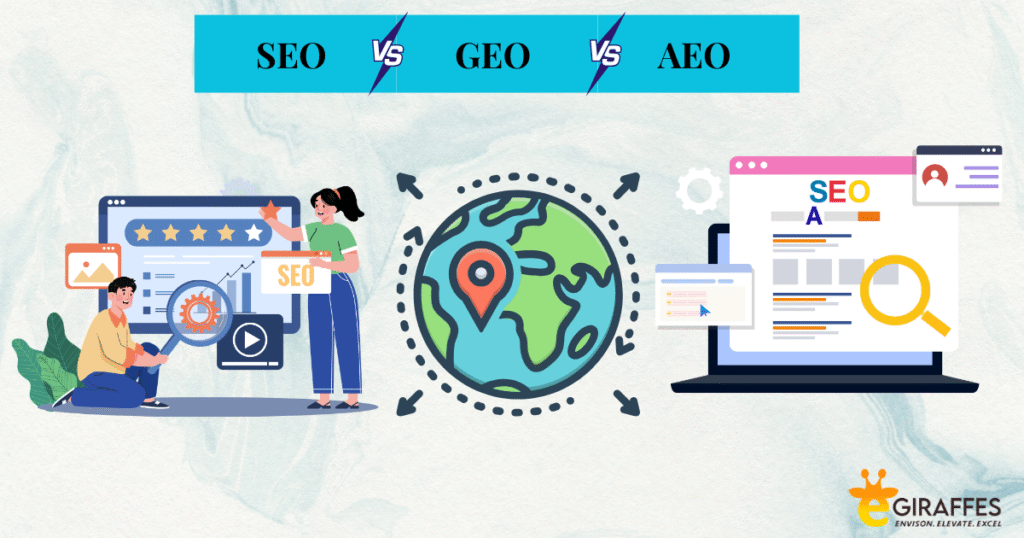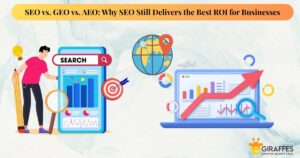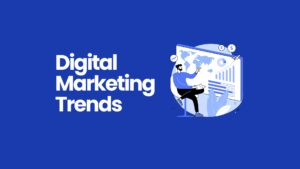SEO is Not Enough in 2025—Here’s Why You Need GEO and AEO

In the fast-paced world of digital marketing, search optimization has evolved dramatically. What once revolved around keyword targeting and backlink strategies has now expanded into something much more complex and nuanced. In 2025, the conversation has moved beyond traditional SEO (Search Engine Optimization) to include newer approaches like AEO (Answer Engine Optimization) and GEO (Generative Engine Optimization). These methods reflect changes not just in search engines but in how users interact with digital content across a growing number of AI platforms.
In this article, we’ll break down what SEO, AEO, and GEO really mean today, how they differ, and why each one plays a crucial role in your online visibility going forward.
1. What is SEO (Search Engine Optimization)?
SEO is the original framework for optimizing a website so it ranks higher in traditional search engine results, particularly on platforms like Google, Bing, and Yahoo. The purpose is simple: when someone types in a relevant keyword, you want your website to show up as high as possible on that results page.
Key Components of SEO:
- Keyword Research: Identifying terms your audience is searching for
- On-Page SEO: Optimizing title tags, headers, URLs, and meta descriptions
- Content Creation: Publishing relevant blog posts, landing pages, and product descriptions
- Backlinks: Earning links from credible websites to boost domain authority
- Technical SEO: Ensuring site speed, mobile optimization, structured data, and crawlability
- Local SEO: Optimizing your Google Business Profile, collecting reviews, and managing citations
Why It Still Matters:
SEO remains a foundational strategy. Even with the rise of AI-based engines, most users still begin their journey with a search. It’s estimated that 70–80% of web traffic still originates from traditional search engines. So while the ecosystem has evolved, SEO is still your first step in being discoverable online.
2. What is AEO (Answer Engine Optimization)?
As AI technologies have become more integrated into search, platforms like Google’s Search Generative Experience (SGE), ChatGPT, Bing Copilot, and others are no longer delivering just a list of links. Instead, they provide direct answers to user queries, often citing only a few trusted sources.
This is where AEO comes into play. AEO focuses on making your content eligible to be the source for these AI-generated answers.
Key Strategies for AEO:
- Create concise and structured content: Use headings, bullet points, and clear formatting
- Use FAQ-style content: These are easier for AI tools to digest and reference
- Implement schema markup: Especially for FAQs, How-to articles, and reviews
- Build topical authority: Publish in-depth content that demonstrates subject expertise
- Optimize for voice and conversational search: Think about how questions are spoken, not just typed
The Importance of AEO:
If a user asks an AI assistant “What’s the best skincare product for sensitive skin?”, the assistant may respond with a single paragraph and a source or two. AEO is your path to being that source. It doesn’t just bring visibility—it builds trust and authority.
3. What is GEO (Generative Engine Optimization)?
GEO is the most recent evolution in the search space. While AEO targets direct answers, GEO goes a step further by optimizing your brand for visibility within the generative outputs of AI systems. Think beyond search engines: this includes being referenced in AI-generated listicles, product comparisons, summaries, and recommendations.
GEO looks at how Large Language Models (LLMs) like ChatGPT, Gemini, Claude, and others gather and reference information. The goal is to ensure your brand is consistently present in these generative results.
Core GEO Tactics:
- Build an Entity-Rich Presence: Ensure your brand is mentioned on a wide range of authoritative platforms—LinkedIn, Quora, Wikipedia, press releases, directories, and forums
- Use structured data formats: Leverage schema.org, JSON-LD, and authorship metadata
- Create AI-friendly content: Clean HTML, summarized insights, and context-rich paragraphs help AI understand and trust your content
- Earn digital authority: Seek citations, mentions, and endorsements on trusted websites
- Monitor AI visibility: Use tools to track whether your brand is being referenced in AI-generated outputs
Why GEO Matters in 2025:
Generative AI is changing how users access information. Instead of clicking through pages of search results, they’re relying on AI tools to summarize the web for them. GEO positions your brand to appear in those summaries—ensuring you’re not overlooked in the AI-driven web.
4. Comparing SEO, AEO, and GEO
Here’s a simplified comparison of how each optimization strategy functions:
| Feature | SEO | AEO | GEO |
| Focus | Traditional search engines | AI-powered direct answers | AI-generated content ecosystems |
| Visibility Format | List of 10 blue links | Summarized responses with citations | AI-generated paragraphs, recommendations |
| Goal | Drive organic traffic | Be cited as a trusted source | Be referenced by AI models in responses |
| Keyword Importance | High | Moderate | Low (semantic understanding is more relevant) |
| Content Format | Long-form, keyword-rich | FAQs, clear Q&A content | Structured, clean, AI-digestible content |
| Tools Used | Google Search Console, Ahrefs | Schema plugins, structured data tools | Entity tracking dashboards, AI visibility monitors |
| Impact | High, long-term | Rapidly growing | Essential for AI-age visibility |
5. Example: Weight Loss Clinic in Nagpur
Let’s say you own a weight loss clinic in Nagpur.
- Using SEO: You optimize your site for keywords like “Best weight loss clinic in Nagpur,” encourage positive reviews, and build local citations.
- Using AEO: You create clear, structured FAQs such as “How does laser lipolysis work?” and use schema markup so your answer might be pulled directly into Google or Bing’s AI summaries.
- Using GEO: You make sure your clinic is mentioned across trusted directories, forums, and social platforms. You also format content in a way that’s easy for AI to process and track whether ChatGPT or Gemini are referencing your clinic.
Together, these strategies ensure you’re discoverable whether someone is typing a search into Google or asking their AI assistant for recommendations.
6. How These Strategies Work Together
Rather than choosing one over the others, the most effective approach is to layer them:
- SEO brings consistent traffic and sets a strong foundation.
- AEO gives your brand visibility in instant, direct answers—particularly in voice search and AI interfaces.
- GEO future-proofs your brand by embedding it into the knowledge base of AI systems.
Ignoring any of these can lead to missed opportunities. Users are no longer relying on just one method to find answers. They’re switching between search engines, AI tools, and voice assistants.
7. Action Plan to Stay Ahead in 2025
Here’s how you can start integrating all three into your digital strategy:
For SEO:
- Perform keyword mapping and gap analysis regularly
- Improve page speed and mobile usability
- Use tools like Semrush, Google Search Console, and Ahrefs
For AEO:
- Identify top questions your audience asks and create dedicated FAQ content
- Add proper schema markup to all important content types
- Ensure your answers are concise and well-structured
For GEO:
- Claim all branded profiles across the web and ensure consistency
- Publish thought leadership and expert content on third-party platforms
- Monitor how and where AI tools mention your brand using visibility tracking tools
Final Thoughts
Search optimization has grown far beyond what it used to be. In 2025, digital success means being visible not just in search engines but across AI-powered platforms and assistants. SEO is still the foundation, AEO is the fast track to credibility in answers, and GEO ensures you’re not excluded from the AI-generated web.
If your brand isn’t optimizing across all three dimensions, you’re likely to lose visibility where it matters most. By adapting now, you can stay competitive as the internet continues its transformation.



